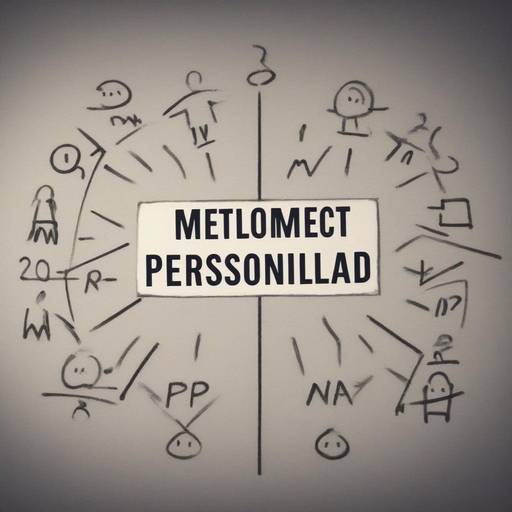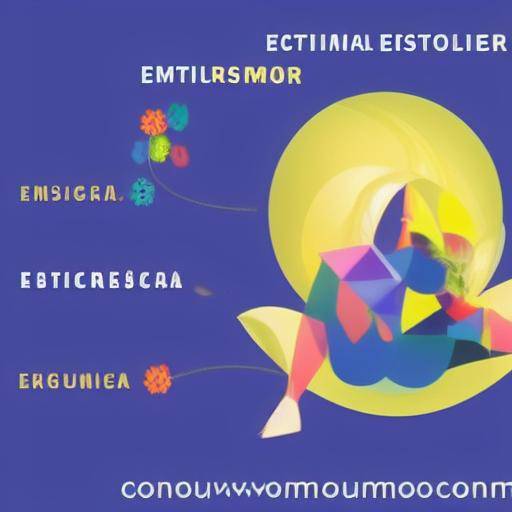
Positive thinking and the mindset of abundance are fundamental components for personal development and emotional well-being. In today's society, where stress and anxiety are common currency, cultivating a positive mentality can make the difference in people's quality of life. In this article, we will thoroughly explore the importance of positive thinking and its relation to the mindset of abundance, offering detailed analysis, practical advice, insights of experts and future trends.
Introduction
Cultivating optimism and prosperity
Positive thinking is much more than just an optimistic approach to life. It is a way of perceiving the world and facing the challenges with a constructive mentality, which fosters personal and professional growth. The mindset of abundance, for its part, is based on the belief that there are sufficient resources and opportunities for all, fostering gratitude and generosity.
In this article, we will explore in detail the relationship between positive thinking and the mindset of abundance, analyzing its benefits, challenges, current trends and its impact on emotional well-being. In addition, we will offer practical advice, insights from experts and future predictions to help our readers effectively incorporate these concepts into their lives.
History and Background
The concept of positive thinking has its roots in various philosophical and religious currents throughout history. From the teachings of Buddhism on the importance of mind in the creation of reality, to the philosophy of Napoleon Hill, who in his work "Think and become rich" emphasized the power of positive mental attitude in success.
The mentality of abundance, on the other hand, has been studied from different perspectives, such as positive psychology and the well-being economy. Prominent figures such as Maslow and Covey have influenced modern understanding of abundance and prosperity.
Detailed analysis
Positive thinking and the mindset of abundance offer multiplicity of benefits in all aspects of life. Studies show that maintaining a positive attitude not only improves mental health and reduces stress, but also strengthens the immune system and promotes better interpersonal relationships.
However, the path to an abundance mentality is not without challenges. The current society, marked by consumerism and competition, can hinder the adoption of this mentality. Overcoming these obstacles requires a paradigm shift and the adoption of new strategies to cultivate gratitude and generosity.
Comprehensive review
Exploring how to apply positive thinking and the mindset of abundance in everyday life is essential. From mindfulness practices to creative visualization, there are various tools that can help foster these mentalities. It is also crucial to analyze different approaches and their practical results to understand their effectiveness in specific contexts.
Comparative analysis
Positive thinking and the mindset of abundance share significant similarities and differences. While the former focuses on personal attitude, the latter encompasses a broader perspective on the availability of resources and opportunities. Understanding these distinctions can provide clarity on how to integrate both mentalities in a synergistic way.
Practical advice and useful advice
While theory is fundamental, practice is crucial. Providing readers with practical advice and concrete actions allows them to immediately apply positive thinking and the mindset of abundance in their day to day. From exercises of gratitude to methods to meet the challenges, offering tangible tools will enhance the understanding and application of these concepts.
Industry Insights and Expert Opinion
Gathering insights from experts and leaders in the field provides a broader and deeper perspective on the impact of positive thinking and the mentality of abundance in different fields, such as psychology, entrepreneurship and emotional well-being. These expert opinions also make it possible to highlight future trends and challenges that might arise in the development and implementation of these mentalities.
Case studies and practical applications
Case studies and real examples are fundamental to illustrate how positive thinking and the mindset of abundance translate into concrete results. Analyzing successful experiences and lessons learned in different environments provides inspiration and practical guidance for those seeking to implement these principles in their personal and professional lives.
Future trends and predictions
Exploring emerging trends related to positive thinking and the mindset of abundance is essential in a constantly changing world. Current data-based predictions and expert projections help to anticipate future challenges and opportunities, preparing people to adapt and thrive in an evolving environment.
Conclusions
In short, positive thinking and the mindset of abundance are fundamental pillars for emotional well-being and personal development. By adopting an optimistic attitude and an abundance perspective, people not only improve their quality of life, but also have a positive impact on their environment.
FAQs
How can I cultivate positive thinking in my daily life?
Cultivating positive thinking in daily life requires practice and commitment. Some effective strategies include the practice of gratitude, creative visualization and emotional self-care.
What benefits does the mindset of abundance offer?
A mentality of abundance promotes the perspective that there are sufficient resources and opportunities for all, fostering creativity, generosity and resilience.
What is the relationship between positive thinking and professional success?
Positive thinking can influence labor performance, problem solving and decision-making, contributing to a person's professional success.
What challenges tend to arise when adopting an abundance mindset?
Challenges in adopting an abundance mindset are often related to competition, fear of scarcity and negative social conditioning.
How can I integrate positive thinking and the mindset of abundance into my interpersonal relationships?
Practicing empathy, positive communication and mutual support are effective ways of integrating these mentalities into interpersonal relationships.
What are future trends related to positive thinking and the mindset of abundance?
Future trends suggest greater emphasis on the application of these mentalities in working, educational and health environments, as well as their integration into emotional welfare technologies and services.
In short, the importance of positive thinking and the mindset of abundance lies in its ability to transform personal and professional life. By adopting these mentalities consciously and proactively, people can open themselves to a world of possibilities and live with greater fullness and satisfaction.






















































